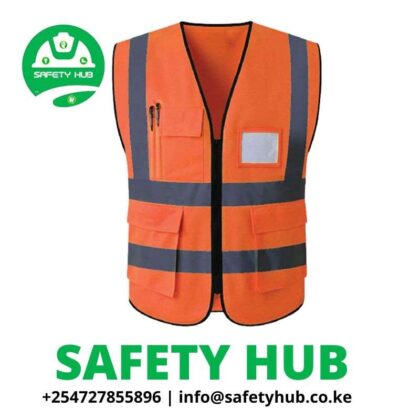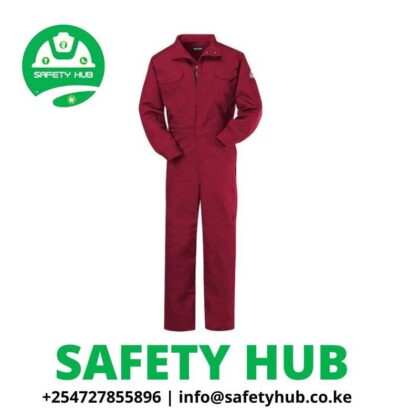PROTECTIVE RESPIRATORY EQUIPMENT

Protective respiratory equipment is one of the key elements of Personal Protective Equipment and is crucial in a wide range of work environments.
It serves to protect workers’ respiratory systems from high levels of dust, oil-based mists, and other airborne particles that could cause internal harm.
These equipment are used to keep particles from entering the lungs where they could build up and do serious damage. More so, they are used for keeping airways, nostrils, and mouth clear. This makes it comfortable for workers working in poor air quality.
There are various types of this safety equipment all suited for different workplaces or tasks. They include filters (NP 305 & NP 306), full face masks, and accessories to ensure all levels of respiratory protection are available and protection from airborne particles is provided.
When is respiratory protection effective?
Respiratory protection can only be effective if it surpasses the following criteria.
- When one knows when to use it
- When one knows the procedure of wearing and taking it off
- When it is available while in need
- When the right kind of respirator is used
- When it is stored in accordance with the manufacturer’s instructions

Types of respiratory equipment protection
There are two main types of respiratory protection: air-purifying respirators (APRs) and atmosphere-supplying respirators (ASRs) with each respirator type providing a different level of protection based on its design.
Air-purifying respirators (APRs)
- Filtering facepiece respirators (FFR) are disposable respirators that cover the nose and mouth.
- Elastomeric half-mask respirators (EHMR) are reusable respirators and cover the nose and mouth.
- Elastomeric full facepiece respirators are reusable and cover the nose, mouth, and eyes.
- Powered air-purifying respirators (PAPR) are reusable and often have a hood or helmet that covers the nose, mouth, and eyes. A battery-powered blower pulls air through filters or cartridges.
Atmosphere-supplying respirators (ASRs)
These respirators include:
- Supplied-air respirators (SAR) -are connected to a separate source that supplies breathing air via a hose. This source is located outside of the work area.
- Self-contained breathing apparatus (SCBA)- have their own breathing air supply that the user carries. This makes these devices portable. SCBAs are either open circuit or closed circuit.
- Combination supplied-air/self-contained breathing apparatus-This combination unit has a small self-contained air supply. The SCBA provides air if the airline supply fails.
Factors to consider when purchasing respiratory equipment
To ensure you buy the right respirator answer the following questions:
- Types and toxicity of contaminants– What kinds of contaminants are within the air?
- Concentration levels of contaminants– how many contaminants or toxins are in the air?
- Size of particles– how deep in the respiratory system can dust particles go and how long will dust remain in the air?
- Activity level and breathing rate– one is supposed to choose the right type of respirator depending on the kind of work the employee is doing. This is important because breathing with respirators is a bit difficult compared to when one is breathing in open air.
- Length of exposure– How long will an employee be breathing in the dust particles?
- Age and overall health– Elderly people and those who suffer from asthma are more likely to be affected so wearing a respirator is more important to them.

PROTECTIVE RESPIRATORY EQUIPMENT PRICES IN KENYA
Being the leader in personal protective equipment we offer you the best and competitive respiratory equipment prices in Kenya as seen below.
-
Product on sale
 Half Mask Respirator MaskOriginal price was: KSh3,500.00.KSh3,000.00Current price is: KSh3,000.00. + VAT
Half Mask Respirator MaskOriginal price was: KSh3,500.00.KSh3,000.00Current price is: KSh3,000.00. + VAT -
Product on sale
 N95 MaskOriginal price was: KSh100.00.KSh65.00Current price is: KSh65.00. + VAT
N95 MaskOriginal price was: KSh100.00.KSh65.00Current price is: KSh65.00. + VAT -
Product on sale
 Full face mask for saleOriginal price was: KSh8,000.00.KSh6,500.00Current price is: KSh6,500.00. + VAT
Full face mask for saleOriginal price was: KSh8,000.00.KSh6,500.00Current price is: KSh6,500.00. + VAT -
Product on sale
 Gas masks for sale (NP 306)Original price was: KSh800.00.KSh550.00Current price is: KSh550.00. + VAT
Gas masks for sale (NP 306)Original price was: KSh800.00.KSh550.00Current price is: KSh550.00. + VAT -
Product on sale
 Disposable non toxic dust masksOriginal price was: KSh750.00.KSh550.00Current price is: KSh550.00. + VAT
Disposable non toxic dust masksOriginal price was: KSh750.00.KSh550.00Current price is: KSh550.00. + VAT -
Product on sale
 3 ply disposable surgical mask (50 PCS)Original price was: KSh450.00.KSh350.00Current price is: KSh350.00. + VAT
3 ply disposable surgical mask (50 PCS)Original price was: KSh450.00.KSh350.00Current price is: KSh350.00. + VAT -
Product on sale
 Quality Taiwan Disposable Dust MaskOriginal price was: KSh1,300.00.KSh950.00Current price is: KSh950.00. + VAT
Quality Taiwan Disposable Dust MaskOriginal price was: KSh1,300.00.KSh950.00Current price is: KSh950.00. + VAT -
Product on sale
 Industrial dust masksOriginal price was: KSh700.00.KSh600.00Current price is: KSh600.00. + VAT
Industrial dust masksOriginal price was: KSh700.00.KSh600.00Current price is: KSh600.00. + VAT -
Product on sale
 Dust Masks Packet of 50 PiecesOriginal price was: KSh1,000.00.KSh650.00Current price is: KSh650.00. + VAT
Dust Masks Packet of 50 PiecesOriginal price was: KSh1,000.00.KSh650.00Current price is: KSh650.00. + VAT -
Product on sale
 Vaultex Half Facepiece Mask Respirator 6000 SeriesOriginal price was: KSh4,500.00.KSh3,500.00Current price is: KSh3,500.00. + VAT
Vaultex Half Facepiece Mask Respirator 6000 SeriesOriginal price was: KSh4,500.00.KSh3,500.00Current price is: KSh3,500.00. + VAT -
Product on sale
 Quality Blue Filter MaskOriginal price was: KSh150.00.KSh100.00Current price is: KSh100.00. + VAT
Quality Blue Filter MaskOriginal price was: KSh150.00.KSh100.00Current price is: KSh100.00. + VAT -
Product on sale
 3M Half face masks Reusable Respirator series 6300Original price was: KSh7,000.00.KSh6,500.00Current price is: KSh6,500.00. + VAT
3M Half face masks Reusable Respirator series 6300Original price was: KSh7,000.00.KSh6,500.00Current price is: KSh6,500.00. + VAT
CONCLUSION
Accidents hurt but safety doesn’t. Employers are supposed to have a responsibility of ensuring that they provide respiratory information to make sure that employees are aware, and the means by which they can mitigate them. When protection is mandatory, employees are supposed to make sure they are equipped with information and awareness so that they can make the right decisions that will protect them effectively
SEE ALSO: IMPORTANCE OF SAFETY SHOES AT WORKPLACE EYE PROTECTION
We Safety Hub Enterprises ensure that our products meet Occupation Safety and Health Administration 29 CFR 1910.134 and 29 CFR 1926.103 because of Your Safety, Our Concern.


























